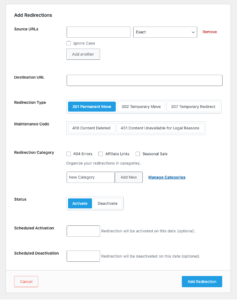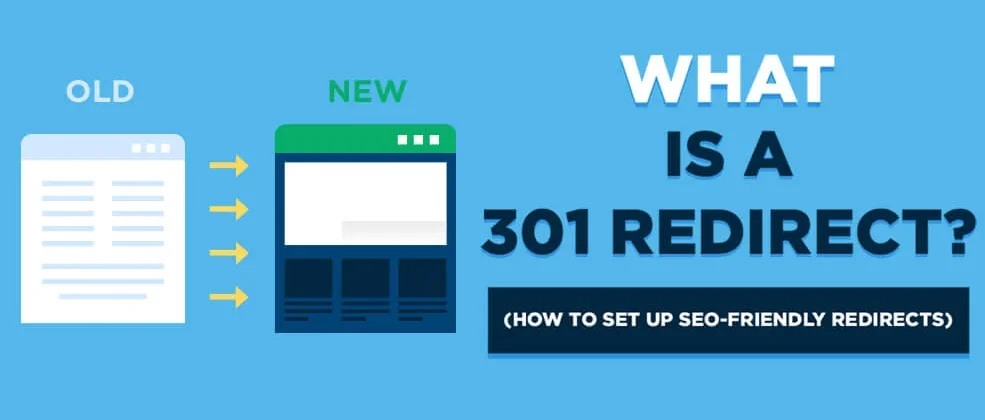Are you a website owner looking for a way to redirect visitors from outdated or broken pages to new ones? Do you want to preserve your website’s search engine optimization (SEO) rankings and improve user experience? If so, you may want to consider implementing a 301 Redirect.
In this guide, we will walk you through the basics of 301 redirects, including what they are, why they are important, and how to use them effectively. So let’s dive in and learn everything you need to know about 301 redirects! In this article, we will dive deeper into the benefits of 301 Redirects, how to implement them, and some frequently asked questions about this tool.
Contents
What is 301 (Permanent) Redirect?

A 301 Redirect is a permanent redirect that informs search engines and web browsers that a web page has been moved to a new URL. It allows you to redirect visitors from the old URL to the new one, preserving SEO rankings, and improving user experience by preventing them from landing on a 404 error page.
Benefits of 301 Redirects
301 Redirects offer many benefits to website owners. Here are some of the most significant ones:
1. Preserve SEO rankings:
When you move a page to a new URL without implementing a redirect, search engines will treat it as a new page and re-crawl it. This means you will lose any SEO value and ranking the old page had built up over time. By using a 301 Redirect, you can redirect the search engine bots to the new page and preserve its rankings.
2. Improve user experience:
Visitors who land on a 40 4 error page may get frustrated and leave your website, which can hurt your bounce rate and user experience. With a 301 Redirect, visitors will be automatically redirected to the new URL, improving their experience and reducing the likelihood of them leaving your site.
3. Update outdated content:
Over time, content on your website may become outdated or irrelevant. By redirecting visitors to new and updated content, you can keep your website fresh and engaging.
Redirect Checker Tools
Use a 301 redirect checker to analyze your links and ensure that your redirects are search-engine friendly if you don’t want to lose your important traffic as a result of negligent redirection. View these helpful redirect-checking tools.
How to Implement a 301 Redirect
Implementing a 301 Redirect can be done in a few easy steps:
- Identify the old page URL: The first step is to identify the URL of the old page that you want to redirect.
- Choose a new URL: Once you have identified the old URL, you need to choose a new URL that you want to redirect visitors to.
- Set up the redirect: You can set up a 301 Redirect using several methods, including server-side redirects, plugins, or through your website’s content management system (CMS).
- Test the redirect: After implementing the redirect, it’s essential to test it to ensure that it’s working correctly. You can do this by entering the old URL in your browser and verifying that it redirects to the new URL.
WordPress Sites and 301 Redirects
Compared to other accessible redirect mechanisms, setting up WordPress redirects is rather basic and easy. Before using any of the other redirect techniques on this list, take into account utilizing a plugin if your website is powered by WordPress.
A built-in redirects manager is available if you’re using the Yoast SEO Premium plugin, and you can use it to implement redirects.

You must install a special redirects plugin if you’re using the free version or another plugin that doesn’t support redirects.
One of the most well-liked redirect managers for WordPress is redirection. Your redirects can be added in a few minutes.
So as to:

A redirect manager is built into the plugin if you’re using an alternative like Rank Math.

Conclusion
In conclusion, a 301 Redirect is a crucial tool for website owners to redirect traffic, preserve SEO rankings, and improve user experience. By redirecting visitors from outdated or broken pages to new ones, website owners can keep their website fresh and engaging, and prevent visitors from landing on 404 error pages.
Implementing a 301 Redirect is relatively simple and can be done through various methods. Remember to test the redirect after implementation to ensure that it’s working correctly.
If you’re unsure about implementing a 301 Redirect, consult with a professional web developer or SEO specialist. They can provide expert advice and help you make the best decision for your website.
